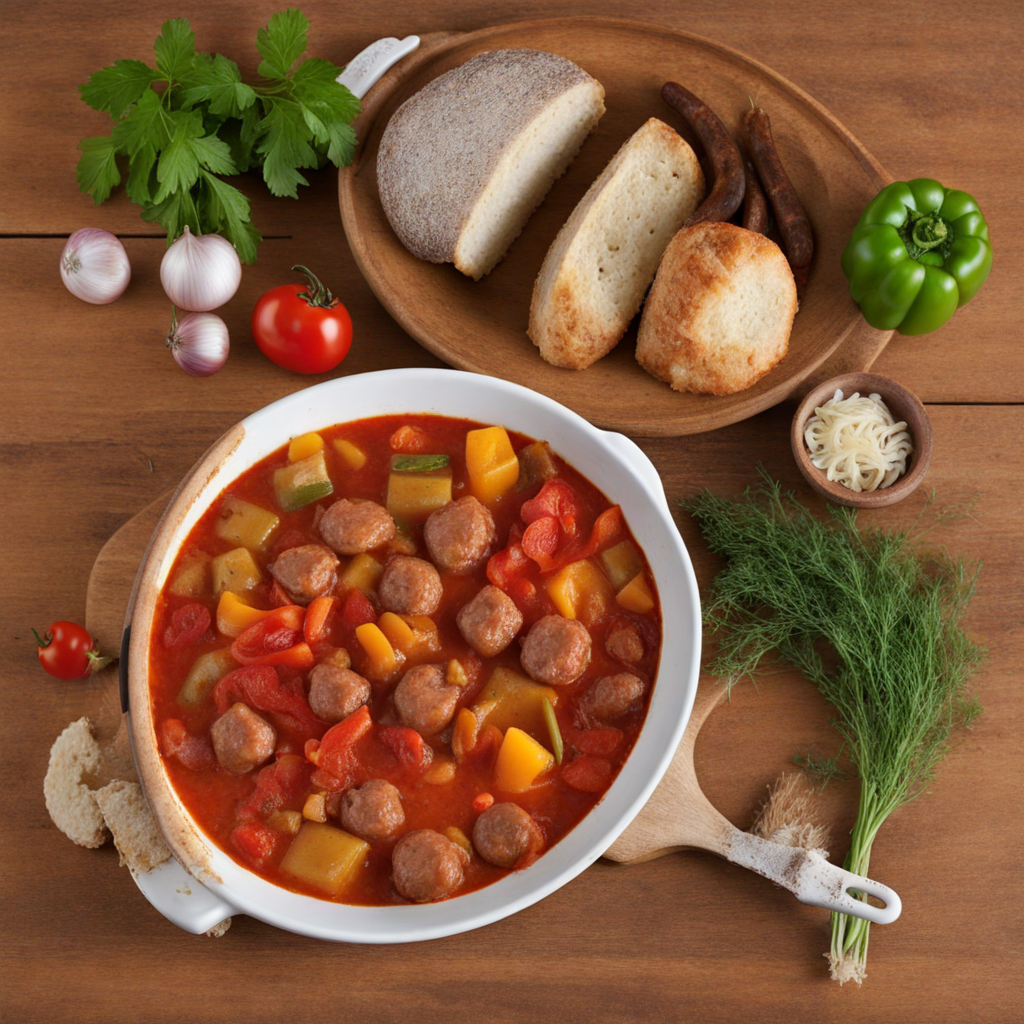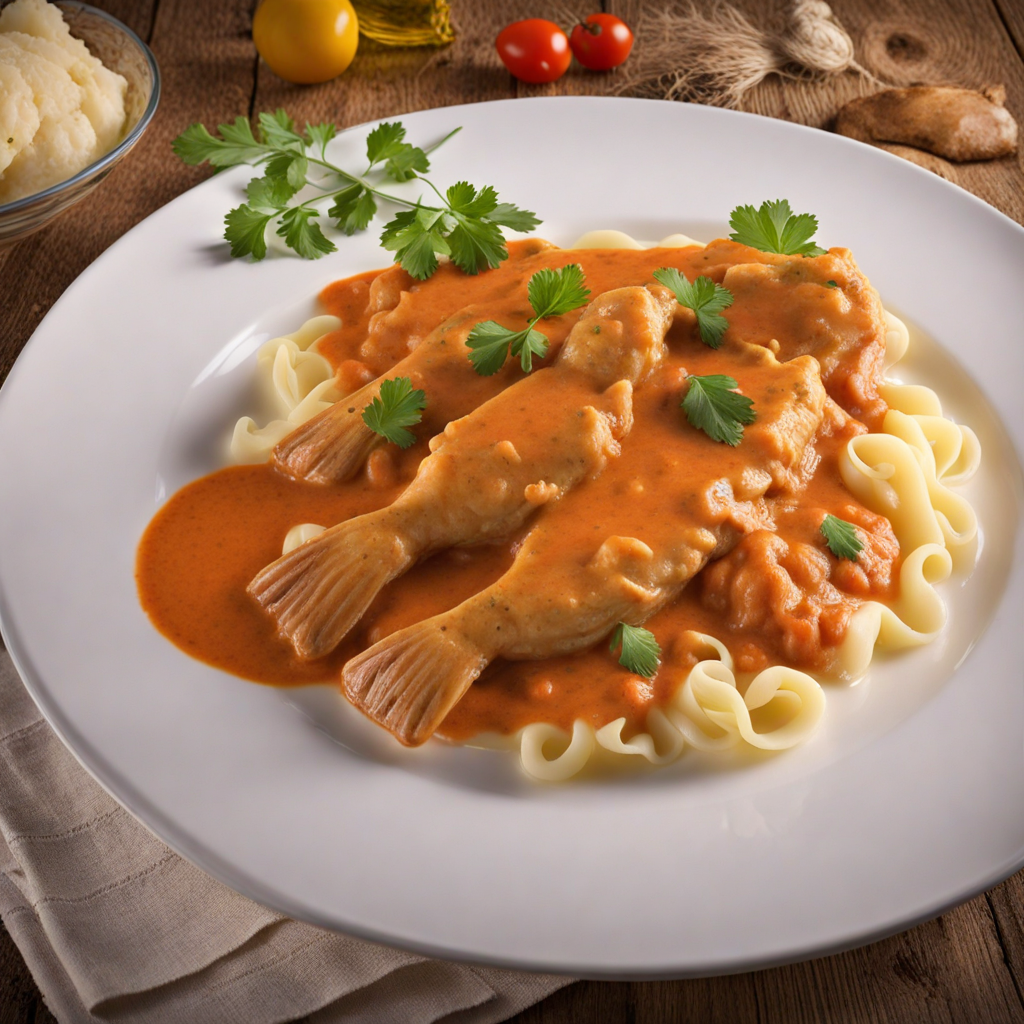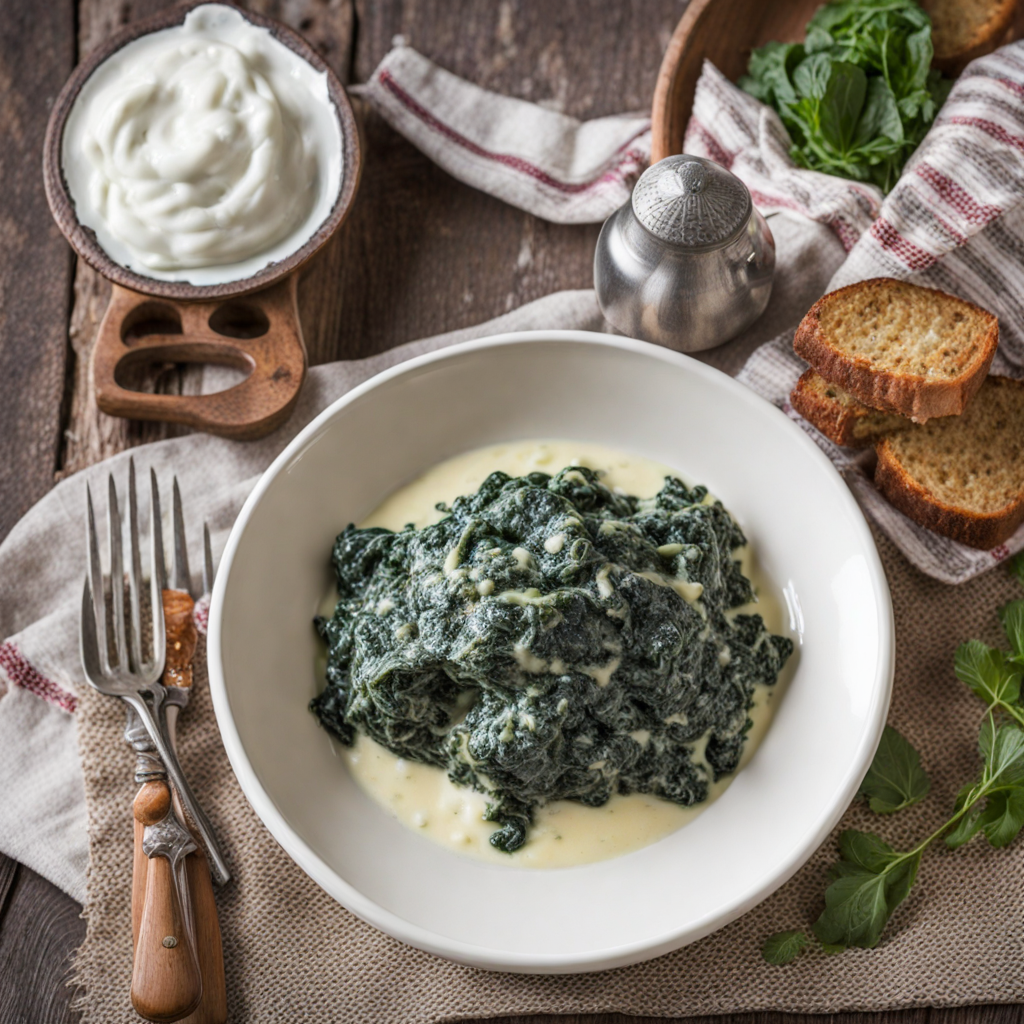Lecsó
Lecsó is a traditional Hungarian dish that embodies the essence of rustic comfort food, showcasing the vibrant flavors of fresh vegetables. At its core, Lecsó is a vegetable stew primarily made from ripe tomatoes, bell peppers, and onions, which are sautéed together to create a rich and aromatic base. The dish is often seasoned with paprika, a spice that holds deep cultural significance in Hungary, lending a subtle smokiness and warmth that elevates the overall taste profile. The ingredients meld together beautifully, resulting in a thick, hearty mixture that is both savory and slightly tangy, making it a perfect accompaniment to various main dishes or enjoyed on its own. As a versatile dish, Lecsó can be customized to suit individual preferences, often incorporating additional ingredients like spicy sausage or bacon for a meatier version, or even zucchini and potatoes for a more substantial vegetarian option. The beauty of Lecsó lies in its adaptability; it can be served as a side dish, a main course, or a filling for crepes and other baked goods. When paired with crusty bread or a dollop of sour cream, it transforms into a comforting meal that warms both the body and the soul. The dish is especially popular in late summer and early fall when tomatoes and peppers are at their peak ripeness, ensuring a burst of flavor in every bite. The experience of savoring Lecsó goes beyond just taste; it is a celebration of Hungarian culinary traditions and the bounty of the local harvest. Each spoonful carries with it the essence of home-cooked meals shared among family and friends, often eliciting memories of gatherings and festive occasions. The vibrant colors of the vegetables combined with the aromatic spices create a feast for the senses, inviting both seasoned food lovers and newcomers alike to indulge in a truly authentic Hungarian experience.
How It Became This Dish
Lecsó: A Culinary Gem from Hungary Origins and Early History Lecsó is a traditional Hungarian dish that embodies the country’s love for vibrant, fresh ingredients and hearty flavors. The dish's name derives from the Slavic word "lečo," which generally refers to a vegetable stew. While the precise origins of lecsó are somewhat murky, it is widely believed to have first emerged in the Hungarian countryside during the late 19th century. The dish draws upon Hungary's agricultural bounty, prominently featuring ingredients like peppers, tomatoes, onions, and paprika, which are staples of Hungarian cuisine. Peppers, especially the sweet varieties, have been cultivated in Hungary for centuries, introduced from the Americas in the 16th century. The introduction of paprika, a spice derived from these peppers, became a defining element of Hungarian cooking and culture. It is this vibrant spice that gives lecsó its characteristic flavor and deep red hue. Over time, the dish has evolved but remains rooted in the traditions of peasant cooking, where the use of seasonal vegetables was both practical and economical. Cultural Significance Lecsó is more than just a dish; it is a cultural symbol of Hungarian hospitality and communal dining. In Hungary, food often plays an integral role in social gatherings, and lecsó is commonly prepared for family gatherings, picnics, and festivals. The dish is typically served in a communal pot, encouraging sharing and bringing people together around the table. The preparation of lecsó can also vary significantly from region to region, reflecting local tastes and available ingredients. This adaptability contributes to its cultural significance, as each family may have its own cherished recipe passed down through generations. The dish can be made vegetarian or can include meats such as sausage or bacon, showcasing Hungary's rich culinary diversity. Lecsó is often enjoyed with bread or as a side dish, and it can serve as a main course on its own. In some households, it's a staple of summer dining, prepared when the vegetables are at their freshest. This seasonal aspect emphasizes the connection between the dish and the land, highlighting the importance of agriculture in Hungarian life. Development Over Time As Hungary entered the 20th century, lecsó began to gain popularity beyond rural areas, becoming a fixture in urban households as well. The post-war period saw a significant transformation in Hungarian cooking, with an increased emphasis on convenience and accessibility. Canned tomatoes and pre-packaged spices began to appear on grocery shelves, allowing for quicker preparation of traditional dishes like lecsó. In the second half of the 20th century, the political landscape of Hungary shifted dramatically with the end of communism in 1989. This change spurred a renewed interest in traditional Hungarian cuisine, with chefs and home cooks alike seeking to revive classic recipes. Lecsó experienced a renaissance, with chefs experimenting with modern techniques while staying true to its roots. During this period, lecsó became a symbol of national pride. Cooking competitions and food festivals celebrating Hungarian cuisine often feature the dish, with participants showcasing their unique interpretations. This has led to a broadening of lecsó’s appeal, as it finds its way into gourmet restaurants while remaining a beloved comfort food in homes across the country. Modern Interpretations In contemporary Hungarian cuisine, lecsó remains a versatile dish. While the classic version consists of sautéed onions, peppers, and tomatoes, modern variations may include a wide array of ingredients. Some cooks add zucchini, eggplant, or even corn, showcasing the dish’s adaptability. The choice of protein has also expanded; while traditional recipes often call for sausage or bacon, modern interpretations may incorporate chicken, beef, or even tofu for a vegetarian option. Spices beyond paprika are sometimes integrated, with herbs like thyme or bay leaves enriching the flavor profile. The use of smoked paprika has also become popular, adding a depth of flavor that resonates with many contemporary palates. Chefs are increasingly experimenting with presentation, serving lecsó in elegant dishes or as part of a refined tasting menu, which reflects Hungary's growing culinary scene. Additionally, the globalization of cuisine has influenced how lecsó is perceived and prepared. Hungarian expatriates around the world have brought their culinary traditions with them, introducing lecsó to new audiences. In various diasporas, the dish has been embraced and adapted, sometimes incorporating local ingredients while retaining its Hungarian essence. Conclusion Lecsó is more than just a dish; it is a reflection of Hungary’s agricultural heritage, cultural identity, and evolving culinary landscape. From its humble roots in the rural kitchens of Hungary to its place on the plates of fine dining establishments, lecsó has remained a beloved staple. Its rich history is a testament to the resilience of traditional cooking practices and the importance of community in sharing meals. As Hungary continues to navigate the complexities of modern cuisine while honoring its past, lecsó stands as a delicious reminder of a vibrant culinary tradition that has withstood the test of time. Whether enjoyed at a family gathering, a summer picnic, or a sophisticated restaurant, lecsó embodies the spirit of Hungarian hospitality and the joy of sharing good food.
You may like
Discover local flavors from Hungary







